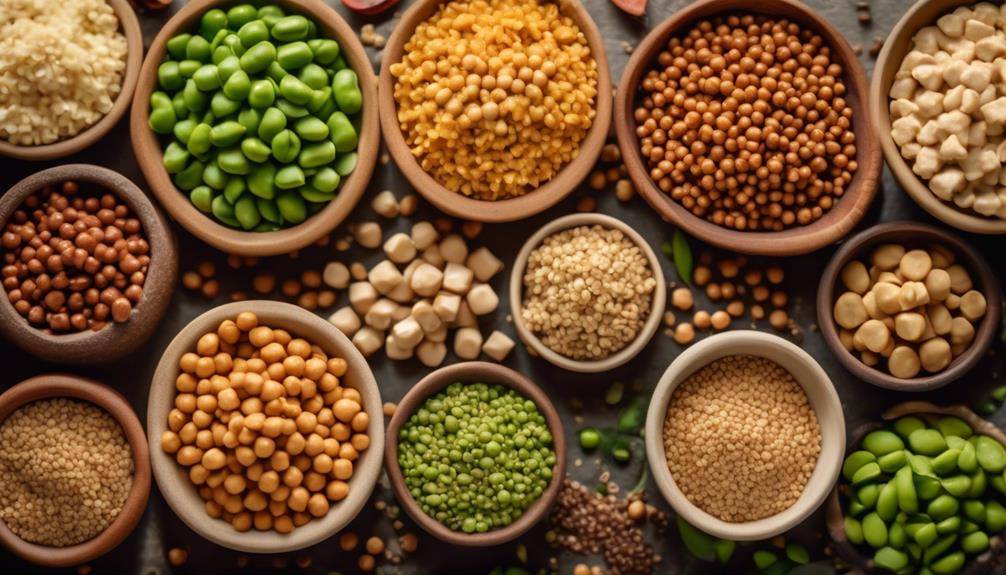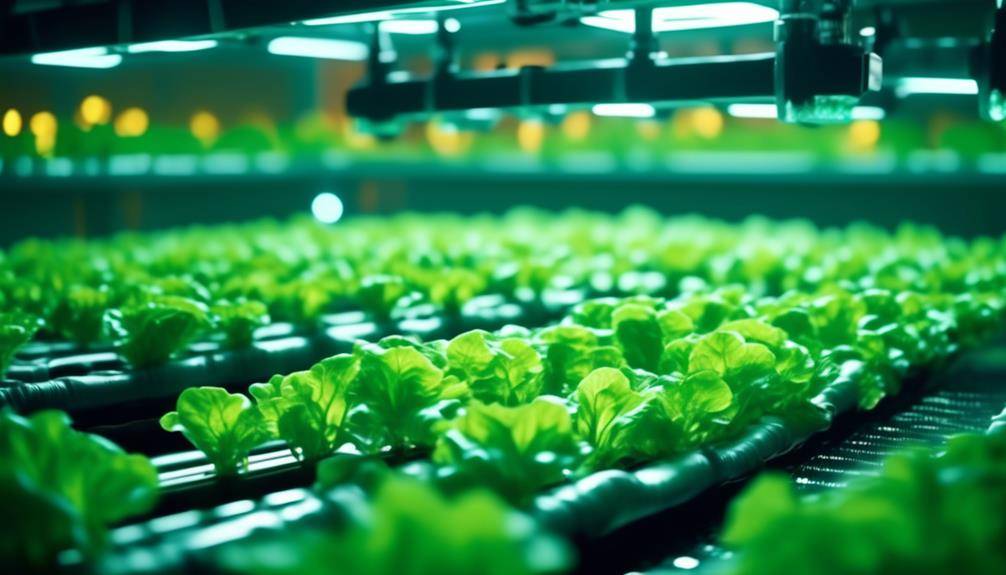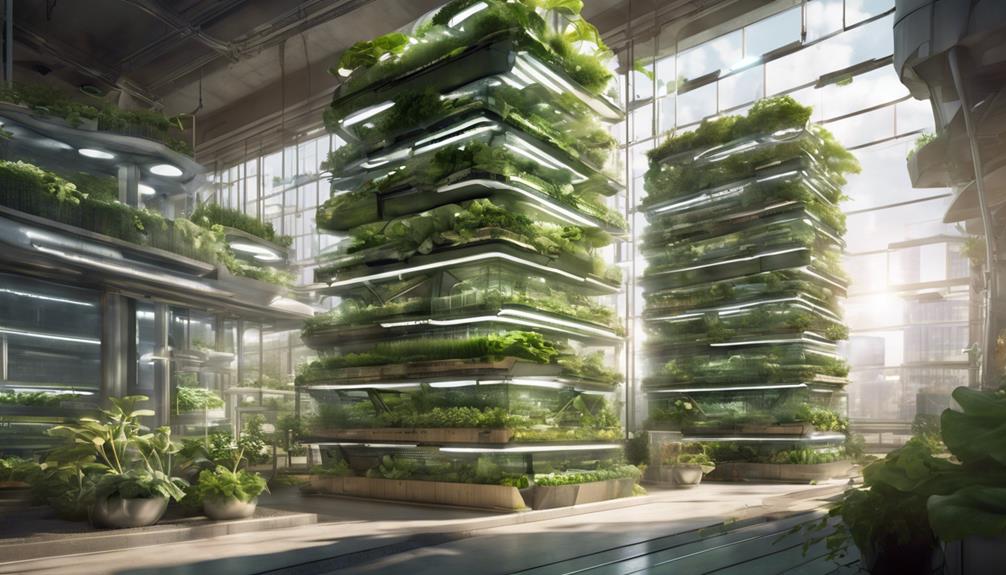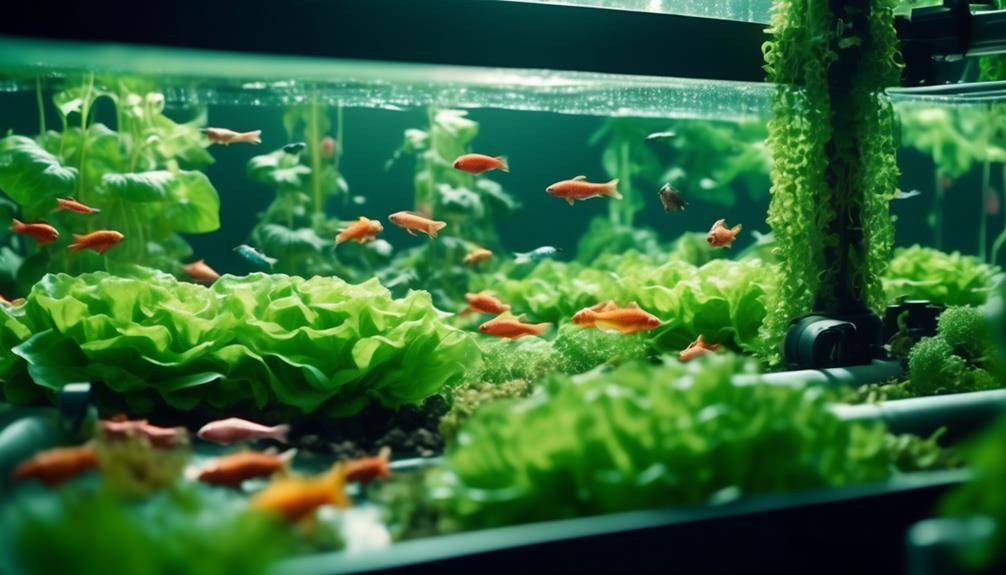Amazing AI For Increased Food Production Efficiency
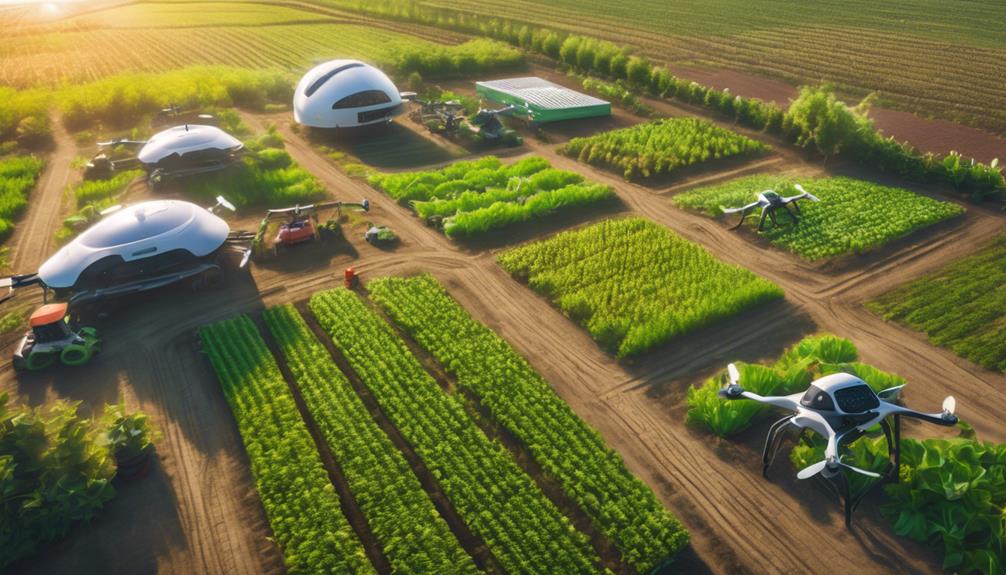
AI For Increased Food Production Efficiency can transform your farming efficiency in multiple ways. It analyzes vast datasets for better crop management and offers real-time monitoring of soil health and pests. With precision farming techniques, you can apply resources like water and fertilizers more effectively, which boosts productivity while reducing costs. AI-driven predictive analytics helps you anticipate weather impacts and make smarter decisions about planting and harvesting. The adoption of these technologies not only leads to higher yields but also promotes sustainable practices. Stick around, and you’ll uncover even more insights and innovative strategies that could reshape your agricultural approach.
Understanding AI in Agriculture
When you think about agriculture, you might not immediately consider the role of artificial intelligence. Yet, AI applications are transforming the agricultural landscape, driving innovation and efficiency. By harnessing machine learning, farmers can analyze vast amounts of data, enabling them to make informed decisions about crop management and resource allocation.
One significant aspect of AI in agriculture is data visualization. It helps you interpret complex datasets, turning them into actionable insights. For instance, farmers can utilize crop modeling to predict yield outcomes based on various environmental factors. This predictive capability leads to better yield optimization strategies, ensuring you maximize productivity while minimizing waste.
Moreover, technology adoption in farming practices is essential. Smart farming techniques powered by AI allow farmers to monitor soil health, weather patterns, and pest activity in real time. This proactive approach not only enhances crop performance but also reduces the environmental impact of farming activities.
Farmer education plays a fundamental role in this shift. As you become familiar with AI-driven tools and methodologies, you can better leverage these innovations to improve your farming practices. Understanding how to utilize AI effectively can lead to significant advancements in agricultural productivity.
Benefits of AI for Farmers
AI brings numerous benefits to farmers, enhancing both productivity and decision-making. With smart farming techniques, you can utilize AI to gather and analyze data, leading to yield optimization. By understanding soil health, weather patterns, and crop requirements, you’re equipped to make informed choices that improve your harvest.
One of the significant advantages of AI is its role in promoting crop diversity. With access to advanced analytics, you can explore various crop options that are better suited for your local climate and market demands. This adaptability not only boosts your farm’s resilience against climate change but also opens up new avenues for market access.
Moreover, AI improves resource management, helping you use water, fertilizers, and pesticides more efficiently. This approach not only reduces costs but also minimizes environmental impacts, aligning your practices with sustainable farming goals. By integrating technology into your daily operations, you can cut down on labor needs, allowing your team to focus on higher-value tasks.
Farmer education also benefits from AI, as it provides real-time insights and recommendations tailored to your specific situation. This constant learning cycle guarantees that you’re always up to date with the latest farming techniques.
Ultimately, AI empowers you to make smarter decisions, leading to cost reduction and greater labor efficiency. By embracing these technologies, you can position your farm for long-term success in an increasingly competitive market.
Precision Farming Techniques
Precision farming techniques revolutionize the way you manage your crops, leveraging data to enhance every aspect of your agricultural practices. By incorporating sensor technology, you can monitor soil moisture levels and other crucial factors in real time, ensuring ideal conditions for growth. Yield mapping allows you to visualize crop performance across your fields, helping you identify areas that need attention.
Using variable rate technology, you can apply fertilizers and pesticides precisely where they’re needed, reducing waste and improving your bottom line. Drone applications and remote sensing provide aerial views of your fields, enabling you to make informed decisions on crop rotation and other agronomic practices.
Data integration plays an essential role in digital agriculture, as it allows you to combine information from various sources, such as satellite imagery and weather modeling. This holistic approach enhances your farm management strategies, ensuring that you’re making the most informed decisions possible.
Geospatial analysis further enriches your understanding of field variability, allowing you to tailor your farming practices to specific areas. Machine learning algorithms can analyze historical data to predict crop performance, helping you adjust your strategies for better yields.
Incorporating these precision farming techniques not only boosts efficiency but also promotes sustainable practices. By maximizing your resources and minimizing waste, you can contribute to increased food production while supporting environmental stewardship. Embracing these innovations is crucial for any modern farmer looking to thrive in today’s competitive landscape.
Predictive Analytics in Crop Management
Predictive analytics in crop management transforms how you plan and make decisions for your farm. By harnessing data from various sources, you can gain valuable insights that lead to better outcomes. For instance, you can analyze historical crop performance, current market trends, and weather patterns to forecast the best times for planting and harvesting. This not only helps in crop yield optimization but also reduces waste and enhances resource management.
One of the key features of predictive analytics is its ability to perform weather impact analysis. By understanding how different weather conditions affect your crops, you can make informed decisions about irrigation, fertilization, and pest control. This proactive approach allows you to mitigate risks associated with unpredictable weather, ultimately maximizing your productivity.
Using advanced algorithms, predictive analytics can identify patterns and correlations in your data that you might not notice otherwise. You’ll find that these insights empower you to adjust your farming practices dynamically, ensuring you’re always one step ahead. For example, if forecasts predict a drought, you can implement water-saving strategies ahead of time, safeguarding your yield.
Incorporating predictive analytics into your crop management strategy means you’re not just reacting to challenges but anticipating them. This forward-thinking approach will give you a competitive edge, enabling you to make decisions that are not only beneficial for your farm today but also sustainable for the future. Embrace predictive analytics, and watch your farm thrive.
AI-Driven Soil Health Monitoring
To optimize your farming practices, you need to understand the critical role of soil health monitoring. AI can analyze soil nutrients to enhance crop health prediction and implement precision irrigation techniques. By leveraging these technologies, you can considerably boost both crop yields and sustainability.
Soil Nutrient Analysis
Understanding soil nutrient levels is fundamental for optimizing crop yields, and AI-driven soil health monitoring is revolutionizing how farmers assess and manage their land. With advanced technology, you can analyze soil composition more accurately, leading to effective nutrient mapping. This process helps identify key metrics like pH levels, soil moisture, and organic matter, enabling you to tailor your fertilization strategies accordingly.
AI tools also track microbial activity, which plays an essential role in nutrient availability. By understanding the relationship between soil health and crop rotation, you can implement better land management practices that improve soil structure and reduce soil erosion. For instance, rotating crops can enhance microbial diversity and enrich organic matter, boosting overall soil vigor.
Moreover, AI-driven systems provide real-time insights, allowing you to monitor fluctuations in nutrient levels and adjust your strategies as needed. This proactive approach not only maximizes productivity but also promotes sustainable farming practices. By integrating AI into your soil nutrient analysis, you’re not just enhancing crop yields; you’re also fostering a healthier ecosystem for future generations. Embrace this technology, and transform the way you manage your land.
Crop Health Prediction
Crop health prediction is becoming a game-changer in modern agriculture, thanks to AI-driven soil health monitoring. By utilizing data on soil moisture and nutrient deficiencies, you can enhance your understanding of crop resilience and make informed decisions. AI tools analyze various environmental factors, allowing you to predict potential disease outbreaks and assess pest resistance at different growth stages.
With accurate disease prediction models, you can proactively manage your crops before issues escalate, ultimately improving yield estimation. By factoring in weather impacts, these AI systems help you adapt your strategies to changing conditions, ensuring your crops thrive under various circumstances.
Moreover, genetic optimization techniques can be integrated, leading to more robust crops that withstand diseases and pests. This combination of technology and agriculture empowers you to cultivate healthier plants while maximizing productivity.
Incorporating AI-driven soil health monitoring into your farming practices not only boosts efficiency but also promotes sustainable agriculture. By embracing these innovative solutions, you’re investing in the future of food production, ensuring that you can meet the demands of a growing population while maintaining the health of our planet.
Precision Irrigation Techniques
Harnessing AI-driven soil health monitoring leads directly to advancements in precision irrigation techniques. By utilizing sensor technology, you can implement drip irrigation systems that deliver water directly to plant roots, enhancing irrigation efficiency. These systems rely on soil moisture sensors that provide real-time data on moisture levels, allowing for accurate moisture monitoring.
With this information, you can tailor your irrigation scheduling to meet the specific crop water requirements, ensuring that each plant receives the right amount of water. This targeted approach not only promotes healthy crop growth but also contributes to significant water conservation.
Automated irrigation systems can be programmed based on the data from these sensors, reducing labor costs and minimizing the risk of overwatering. Smart irrigation systems utilize AI algorithms to predict water needs, adjusting in real-time to changing weather conditions and soil health.
Automation and Robotics in Farming
As advancements in technology continue to reshape various industries, farming is experiencing a significant transformation through automation and robotics. You’ll find that autonomous tractors are revolutionizing how you approach land cultivation, allowing for precise, efficient plowing and planting. With drone technology, you can now monitor crop health from above, identifying issues early and making informed decisions.
Robotic harvesters are another game changer, enabling you to gather crops with speed and efficiency that human labor can’t match. These machines use AI crop monitoring systems to assess ripeness, ensuring you harvest at the ideal time for maximum yield. Smart greenhouses are also on the rise, utilizing automated irrigation and climate control to create perfect growing conditions for your plants, reducing water waste and increasing productivity.
Agri tech startups are at the forefront of this revolution, offering innovative digital farming tools that integrate machine learning algorithms to analyze data and predict outcomes. This means you can enhance your farming practices based on real-time insights, leading to improved efficiency and sustainability.
Ultimately, embracing automation and robotics in farming allows you to streamline operations, reduce labor costs, and improve crop yields. With the integration of these technologies, you’re not just keeping pace with the future of agriculture; you’re positioning yourself as a leader in the movement toward more efficient food production.
Supply Chain Optimization
In optimizing your supply chain, understanding demand forecasting techniques is essential for staying ahead of market trends. You can also enhance your efficiency with effective inventory management solutions that minimize waste and guarantee product availability. Let’s explore how AI can transform these areas for your food production operations.
Demand Forecasting Techniques
Effective demand forecasting techniques are essential for optimizing supply chains in food production. By analyzing market trends and consumer behavior, you can better predict the demand for various products. Seasonal variations play a significant role in food production, so it’s vital to incorporate these factors into your forecasts.
Data integration is key. When you combine data from various sources—such as sales history, weather patterns, and agricultural policies—you gain a thorough view of demand fluctuations. Technology adoption enhances this process; using AI and machine learning can improve the accuracy of your predictions.
Understanding economic impacts can also sharpen your forecasting. This includes evaluating how changes in the economy affect consumer spending and demand for food products. Additionally, competitor analysis helps you stay ahead; knowing your competitors’ pricing strategies can inform your own decisions.
Inventory Management Solutions
Optimizing inventory management solutions is essential for maintaining efficiency in food production. By implementing smart shelving and advanced inventory tracking systems, you can enhance storage optimization and guarantee that resources are allocated effectively. This approach not only reduces waste but also accommodates demand variability in your supply chain.
When you utilize technology integration, you can streamline farm logistics and improve supply chain resilience. For instance, incorporating AI-driven tools can help you monitor stock levels in real-time, allowing for timely restocking and minimizing excess inventory. These systems can also adapt to the needs of your crops, supporting better crop rotation practices and enhancing overall yield.
Moreover, by optimizing your inventory management, you can tackle challenges related to resource allocation and maintain a more sustainable operation. The combination of smart shelving and precise inventory tracking empowers you to make informed decisions, leading to increased efficiency and reduced waste.
AI for Pest and Disease Control
Harnessing the power of AI can revolutionize how you manage pests and diseases in agriculture. By utilizing advanced techniques like machine learning and remote sensing, you can enhance pest detection and disease mapping, leading to more effective integrated pest management strategies. AI diagnostics allow you to identify threats early, minimizing crop damage and improving overall crop resilience.
With satellite imagery, you can monitor large areas of farmland, detecting changes in crop health that may indicate pest infestations or disease outbreaks. This real-time data empowers you to act swiftly, applying targeted interventions rather than widespread treatments. By focusing on specific problem areas, you not only save resources but also promote sustainable practices.
Pest lifecycle analysis through AI can provide insights into how pests evolve and adapt. Understanding these patterns helps you develop more robust management tactics that consider the biology of the pests, allowing you to stay one step ahead. Bioinformatics applications further enhance your ability to assess genetic data from pests and pathogens, giving you deeper insights into potential vulnerabilities.
Integrating these AI technologies into your farming operations can lead to a significant reduction in crop loss and a more efficient use of chemicals. By embracing AI for pest and disease control, you position yourself at the forefront of agricultural innovation, ensuring that your crops thrive despite the challenges posed by pests and diseases. This proactive approach not only boosts your productivity but also contributes to a more resilient food system.
Data-Driven Decision Making
Data-driven decision making has become essential for modern agriculture, transforming how you approach farming practices. By leveraging data analytics, you can gain valuable agricultural insights that help optimize your operations. With the right tools, you can analyze performance metrics to identify areas needing improvement and adjust your strategies accordingly.
Incorporating decision support systems into your farming routine enables you to make informed choices based on real-time data. You’ll be able to conduct trend analysis, which reveals patterns over time, allowing you to anticipate market demands and adapt your crop selection. This proactive approach not only enhances productivity but also boosts your operational efficiency.
Risk assessment becomes more manageable when you rely on data-driven strategies. By evaluating potential risks using historical data and current trends, you can take calculated actions that minimize losses and safeguard your investments. Additionally, effective resource allocation is critical; data can guide you on where to invest your efforts, whether it’s in precision agriculture technologies or optimizing inputs like fertilizers and water.
Enhancing Water Efficiency
To boost water efficiency in agriculture, you’ve got to adopt smart irrigation practices that conserve this crucial resource. By implementing advanced irrigation technology, you can dramatically reduce water waste while ensuring your crops receive the hydration they need. Innovations such as drip irrigation systems and soil moisture sensors enable you to deliver water precisely where and when it’s needed, minimizing evaporation and runoff.
Consider integrating irrigation management software that uses real-time data to optimize watering schedules. These tools analyze weather patterns and soil conditions, allowing you to adjust your irrigation practices dynamically. With irrigation technology advancements, you’ll not only save water but also enhance crop yields and reduce costs.
Embracing water conservation strategies is essential for sustainable farming. You can explore rainwater harvesting systems to collect and store precipitation for irrigation use. Additionally, mulching and cover cropping can improve soil health and moisture retention, reducing your dependence on supplemental watering.
Sustainable Farming Practices
Embracing sustainable farming practices is essential for the future of agriculture. By adopting methods like organic farming and agroecological practices, you can reduce your environmental impact while improving crop yields. Regenerative agriculture not only replenishes the soil but also enhances its biodiversity, creating a healthier ecosystem.
Implementing crop rotation is a key strategy. By changing the types of crops you grow in a specific area over time, you can prevent soil depletion and reduce pest infestations. Pair this with sustainable pest management techniques, and you’ll minimize the need for chemical pesticides, fostering a safer environment for beneficial insects.
Soil conservation is another critical aspect. Techniques like cover cropping help protect soil from erosion while adding organic matter back into the ground. This bolsters your soil’s health and fertility. Additionally, agroforestry systems can play a significant role in maximizing land use efficiency, integrating trees and shrubs with crops to create diverse habitats and improve microclimates.
Consider participating in community-supported agriculture (CSA) programs. These initiatives not only promote local food production but also strengthen community ties and support sustainable practices. By focusing on biodiversity enhancement, you create a resilient farm that can better withstand pests and climate fluctuations.
Ultimately, integrating these sustainable farming practices not only benefits your farm but also contributes to a more sustainable food system. Together, we can cultivate a healthier planet for future generations while ensuring food security.
Case Studies of AI in Action
Harnessing the power of artificial intelligence, farmers around the world are transforming their operations and boosting efficiency. One compelling example is the use of AI applications in precision agriculture. Farmers have integrated drones equipped with AI technology to monitor crop health in real-time. These innovative solutions allow for targeted interventions, greatly improving yield metrics.
Take, for instance, a case in California where AI-driven analytics enabled farmers to predict irrigation needs accurately. By analyzing soil moisture levels and weather data, they reduced water usage by 30%, showcasing a substantial economic impact while promoting sustainability. Such success stories highlight how technology integration can address system challenges in agriculture.
In another real-world example, farmers in Brazil have adopted machine learning algorithms to identify pest infestations early. This proactive approach not only minimizes crop loss but also lowers the cost of pesticides, directly enhancing profit margins. Farmer experiences like these illustrate the practical benefits of AI in agriculture, leading to better decision-making.
Furthermore, efficiency metrics have shown that AI-assisted farming can increase yields by up to 20% in some crops. This data-driven approach empowers farmers to optimize resources and improve overall productivity. As AI continues to evolve, the agricultural sector stands to gain even more, creating a ripple effect of innovation and economic growth. Embracing these technologies can redefine farming practices, ensuring food security for future generations.
Future Trends in Agricultural AI
As the agricultural landscape evolves, the integration of AI is set to reshape farming practices in unprecedented ways. You’ll see future trends focusing on advanced crop breeding techniques powered by machine learning algorithms. These innovations promise to enhance food security by developing resilient crop varieties that can withstand climate change and pests.
However, charting the path ahead isn’t without its hurdles. Regulatory challenges will likely arise as governments grapple with the rapid pace of technology adoption. You’ll need to stay informed about changing regulations to guarantee compliance while leveraging AI tools effectively.
Public perceptions of agricultural AI will also play a significant role. As consumers become increasingly aware of how technology impacts food production, you’ll find that transparency and ethical considerations will be paramount. You’ll want to engage with your audience, addressing concerns about data privacy and the implications of AI in farming practices.
Additionally, keeping an eye on market trends will be vital. AI-driven insights can help you make informed decisions about resource management and optimize supply chains to meet consumer demands. As you adapt, remember that collaboration with tech developers and researchers can lead to innovative solutions.
AI For Increased Food Production Efficiency; Frequently Asked Questions
How Can Small-Scale Farmers Access AI Technologies Affordably?
You can access affordable solutions by forming community partnerships with local organizations that provide resources and training. Collaborating with others can help you share costs and knowledge, making AI technologies more accessible for your farming needs.
What Are the Ethical Concerns Surrounding AI in Agriculture?
You should consider ethical concerns like data privacy, algorithm bias, and environmental sustainability. It’s essential to guarantee technology supports farmer autonomy rather than undermining it, promoting a fair and responsible agricultural landscape for everyone involved.
How Does AI Impact Employment in the Agricultural Sector?
AI impacts employment in agriculture by causing job displacement while also leading to skill enhancement. You’ll find that workers must adapt to new technologies, ultimately transforming roles and creating opportunities for those willing to learn.
Are There Any Risks Associated With Relying on AI in Farming?
Yes, relying on AI in farming poses risks like data privacy breaches, technology dependence, algorithm bias affecting decisions, and potential system failures that could disrupt operations. You must assess these challenges carefully for sustainable practices.
What Training Is Necessary for Farmers to Use AI Tools Effectively?
To use AI tools effectively, you’ll need training in data literacy and technology adoption. Understanding data analysis and integrating new technologies into your farming practices will enhance productivity and decision-making in your operations.
Conclusion
Incorporating AI into agriculture isn’t just a trend; it’s a game-changer for boosting food production efficiency. By embracing precision farming, predictive analytics, and soil health monitoring, you’re not only optimizing your yields but also promoting sustainable practices. The future of farming looks bright with AI, leading to smarter decisions and healthier crops. So, as you look ahead, consider how these technologies can transform your approach to agriculture and guarantee a more productive, sustainable future.



